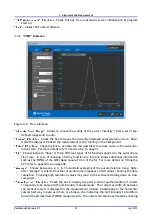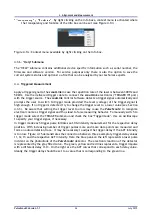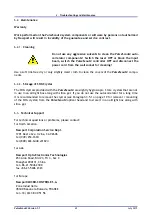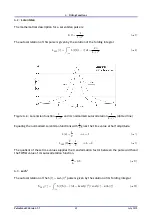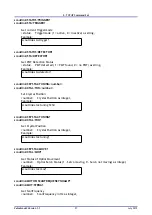
5.
Additional Hints
5.4.
Signal Level
To cover a wide input power range and/or pulse width range the sensitivity can be varied over
a large scale. This may lead to high noise levels, especially when measuring with PMT detector
modules. Therefore, for most exact measurements, it is advisable to adapt the power input level
to an operation where only the lowest possible sensitivity (PD and PMT detectors) and gain (PMT
detectors only) values are required. The operation in triggered mode with very short pulses at low
repetition rates is most critical. In this case, the detector can become overloaded at high input
levels with a low sensitivity setting thus causing a suppression of the ACF peak without cutting it
off. The ACF may look similar to an ideal ACF but will be arti cially broadened.
To prevent this it
is strictly recommended to operate triggered mode with photodiode (PD) detectors only.
5.5.
Rotation of Plane of Polarization
The
Pulse
Scout2
autocorrelator requires a horizontal input polarization (E- eld; for speci cations
see Table 2.1 on page 12). In consequence, if the laser beam that is to be measured is vertically
polarized, the plane of polarization has to be rotated.
A
λ/
2
plate can be used for rotating the beam's polarization: by placing the plate in the input beam
and tilting it by an angle
α
the polarization is rotated by
2
α
. However, this effect is usually very
wavelength sensitive. Therefore this solution might not be applicable to your speci c experimental
setup.
Pulse
Scout2 Version 1.1
42
July 2015



